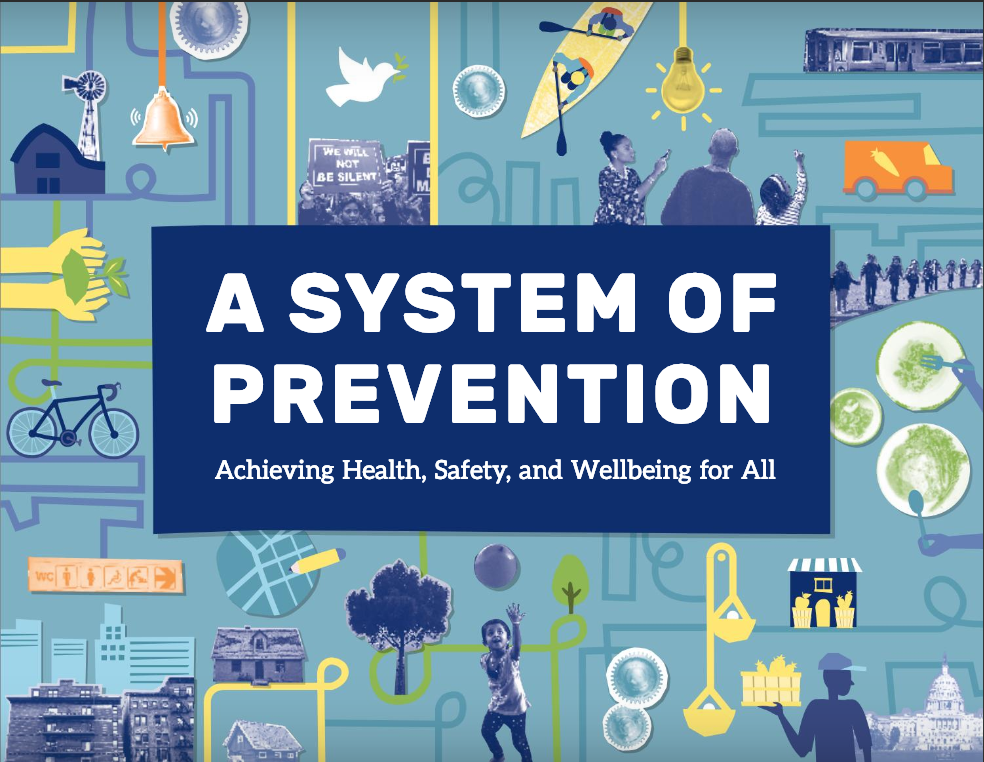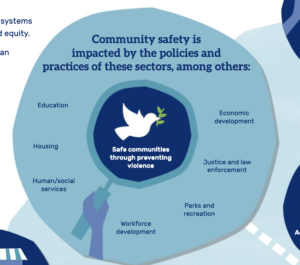A System of Prevention: Achieving Health, Safety, and Wellbeing for All
“Let’s see if we can prevent being ill by trying to offer a love of prevention before illness.”
-Maya Angelou

Prevention Institute recently published A System of Prevention: Achieving Health, Safety, and Wellbeing for All. This book draws on past successes and future vision to outline what it takes to advance community-level prevention.
Prevention Institute urges readers to adopt systems-level problem solving and solutions. Systems-level thinking requires creativity and collaboration and results in some of the greatest achievements and advancements imaginable. Systems are interconnected and impact many of the ways people live and interact with the world, like how housing, transportation, work, and education interact to either promote health and equity or uphold inequitable systems and practices. Systems are not static and can be changed and redesigned to promote health equity, including systems that are historically and currently oppressive and inequitable. Prevention Institute provides examples, like how people can change land use policies from those that increase racial segregation to those that redistribute power back to communities, as in the case of community-driven and community-centered park reforms.
 Many of the examples in A System of Prevention focus on food, housing, transportation, and education, and sexual and domestic violence prevention practitioners can easily identify how creating health equity across community systems contributes to violence-free communities. Creating a system of prevention addresses the many shared risk and protective factors that impact sexual and domestic violence prevention, like fostering community connectedness, increasing safe and affordable housing, and providing equal living wages.
Many of the examples in A System of Prevention focus on food, housing, transportation, and education, and sexual and domestic violence prevention practitioners can easily identify how creating health equity across community systems contributes to violence-free communities. Creating a system of prevention addresses the many shared risk and protective factors that impact sexual and domestic violence prevention, like fostering community connectedness, increasing safe and affordable housing, and providing equal living wages.
Prevention works, and investing in community-led systems-level prevention ensures that entire communities reap the benefits of a healthy, safe, equitable community. Achieving this will take community leadership and multisector collaboration, and A System of Prevention highlights examples of success from across the country to inspire systems change in other communities. As the book says, the time is now and now is the time to redesign the systems for prevention to ensure health, safety, and a better quality of life.
Find the e-book of A System of Prevention: Achieving Health, Safety, and Wellbeing for All here.
